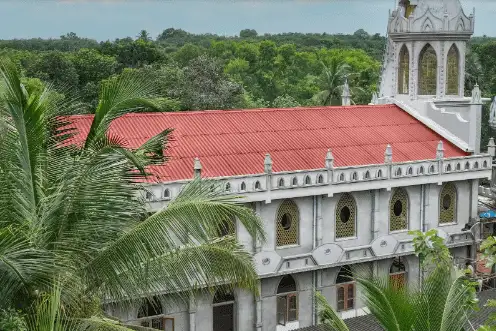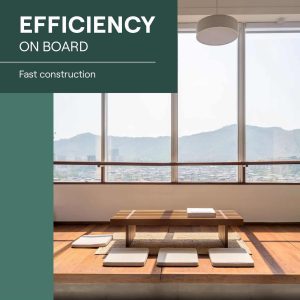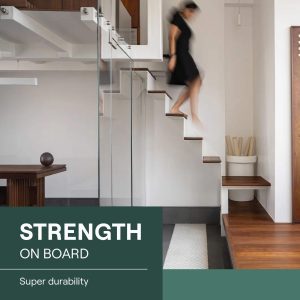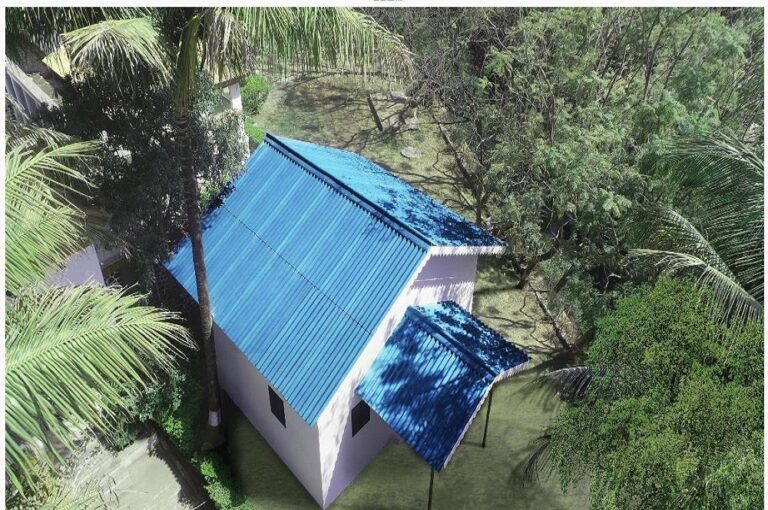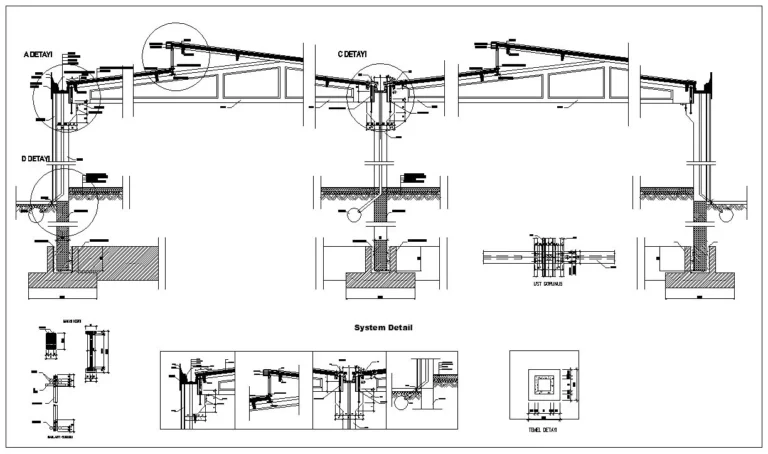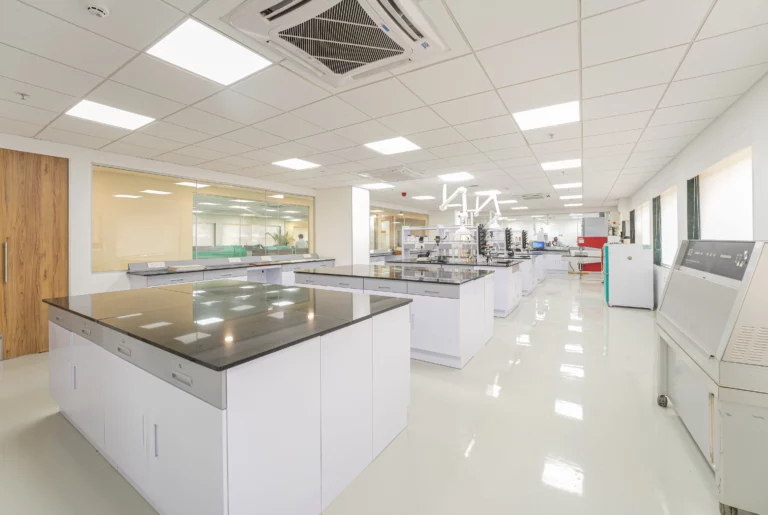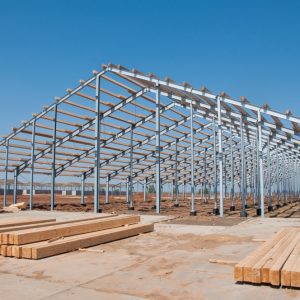What is Green Roofing?
When it comes to constructing or renovating a building, one of the essential aspects to consider is the roofing material. In traditional construction, roofing materials such as asphalt shingles are commonly used. However, these materials are not always eco-friendly, and may have a negative effect on the environment. Due to this, there has been a growing interest in eco-friendly alternatives to traditional construction materials.
In this decade of increasing environmental consciousness, green roofing materials have come to the limelight as a sustainable roofing alternative.
Also known as eco-roofing, green roofing aims to incorporate sustainable materials and practices into the construction and maintenance of roofs. Not only is it great for the environment, but sustainable roofing materials can also offer a range of other benefits, such as energy efficiency, enhanced aesthetics and even tax benefits!
Multiple green building councils in India, such as GRIHA, LEED and IGBC, have tied up with state and central governments to promote green building initiatives through certain incentives, including tax incentives.
Thus, by choosing green roofing, you can contribute to a greener future while also enjoying its numerous advantages.
Let’s look at a few different eco-friendly roofing materials
Types of Eco-Friendly Roofing Materials
Green roofing materials come in several types, each with its unique features and benefits. Let’s explore some of the popular eco-friendly roofing materials:
1. Slate Roofing
Slate roofing is a roof made from natural stone material that offers durability and minimal maintenance. Slate roofs are recyclable and have a long lifespan, making them a sustainable roofing material. The natural thermal properties of slate also contribute to energy efficiency by helping to regulate indoor temperatures.
Slate roofing is generally used in residential projects, however, this is an expensive material choice and might not suit every project.
2. Non-asbestos Cement Roofing
Cement roofing is highly sustainable as it is made with natural materials such as cement, and water. The absence of asbestos fibres makes these sheets an eco-friendly option.
Roofing materials like slate and shingles tend to be expensive and require regular maintenance. On the other hand, non-asbestos cement sheets have minimal maintenance and high durability, making them a sustainable option in the long run. Unlike metal sheets, they are weather-resistant and do not face problems like corrosion.
One such non-asbestos, corrugated roofing sheet is Everest Hi-Tech, which is a GRIHA certified sustainable choice. Its material reflects sunlight and heat instead of absorbing it into the structure, making it an energy-efficient choice. These sheets are ideal for high moisture climates and chemical industries. While they are commonly used in industrial peb building projects, they are also a popular choice for residential projects.
3. Composite Roof Sheet
Composite roof sheets are engineered roofing materials that are designed to mimic the appearance of traditional materials like wood or slate. These sheets are typically made from a combination of recycled plastics and other eco-friendly roofing materials. Composite roof sheets offer good durability, fire resistance, and resistance to weather conditions, making them a practical choice for eco-conscious homeowners.
4. Built-up Roofing Membrane
Built-up roofing (BUR) membranes are commonly used in commercial and residential settings. They consist of multiple layers of bitumen (a sticky, black, and viscous material) and reinforcing fabrics, such as fibreglass or polyester. BUR membranes are known for their good durability and resistance to UV radiation. These roofs provide effective insulation, reducing energy consumption for heating and cooling. The materials used in BUR membranes are often recyclable, contributing to their eco-friendly nature.
5. Spray-on Roofing
Spray-on roofing, also known as spray polyurethane foam (SPF) roofing, is a unique sustainable roofing option usually used in industrial projects. It involves spraying a liquid foam material onto a pre-existing base roof, which expands and solidifies into a seamless and durable foam layer. SPF roofing provides good insulation properties, reducing energy consumption for heating and cooling. It forms a protective barrier that seals cracks, gaps, and seams, preventing water leakage. This spray-on roofing is lightweight and can be installed over existing roofing materials, such as a slate or non-asbestos cement roof.
6. Shingle Roofing
Shingle roofing is a widely used residential roofing option that can also be environmentally friendly. Traditional asphalt shingles are not considered eco-friendly due to their petroleum-based composition and limited lifespan. However, there are eco-friendly shingle alternatives available. For example, some manufacturers produce recycled asphalt shingles using materials such as rubber or plastic. These shingle roofs are more durable and have a longer lifespan than traditional asphalt shingles. Additionally, there are options like wood shingle roofing or shakes made from sustainably harvested materials. These wood shingles can be treated to enhance their resistance to fire and decay, making them a viable eco-friendly choice.
7. Metal Roofing
Metal roofing has gained popularity in recent years for its durability, energy efficiency, and recyclability. These metal sheets are often made from recycled materials, such as aluminium or steel, and can be further recycled at the end of their lifespan.
However, these sheets have considerable drawbacks when it comes to practical use. They are prone to weather damage and tend to absorb heat, which can increase temperatures in the enclosures within. They are also prone to denting and scuffing, and noisier than other roofing materials. Corrosion is another big drawback that comes into play with metal roofing. While it does have the benefit of being eco-friendly, it is important to take these drawbacks into account before opting for a metal roofing sheet.
8. Modified Bitumen Roofing
Modified bitumen roofing is a type of asphalt-based roofing material that has been modified with rubber or plastic additives to enhance its performance. It is commonly used in low-slope or flat roofs or for industrial purposes. Modified bitumen roofs are durable, weather-resistant, and have good waterproofing properties. They can be installed with various methods, including heat welding or adhesive, ensuring a secure and watertight roof. Modified bitumen roofing is known for its longevity and can be recycled at the end of its life cycle, contributing to sustainability efforts.
Conclusion
When it comes to sustainable roofing options, there is ample choice for those looking to embrace eco-friendly practices in their roofing choices. Non-asbestos cement roofing is one choice that stands out, with its many advantages of being non-corrosive, durable and ideal for high moisture climates. Other sustainable materials, like spray-on roofing, eco-friendly shingles or modified bitumen roofing, can also help individuals make a positive impact on the environment while enjoying the benefits of durability, energy efficiency, and reduced maintenance.
The availability of eco-friendly roofing materials is always expanding, giving individuals and communities more choices to promote sustainability in construction projects. Other options, such as metal roofs with high recycled content, solar panels integrated into the roof, and vegetative roofing systems, are also gaining popularity for their sustainability features.
Remember, it is important to consult with roofing professionals who specialise in eco-friendly options to determine the best choice for your specific needs and location.


